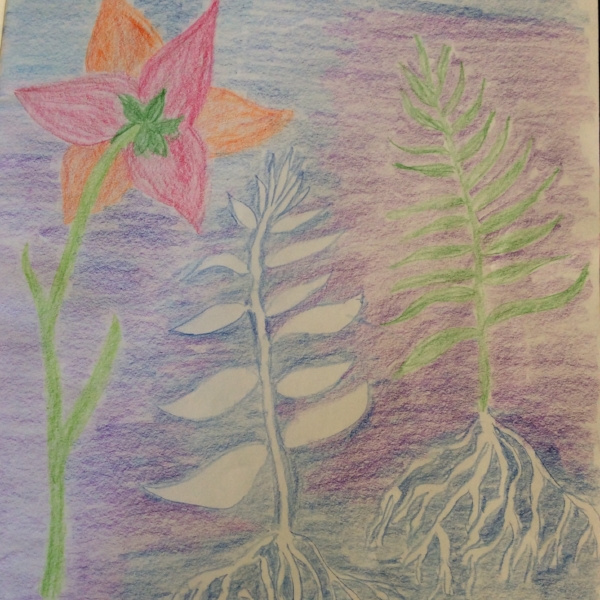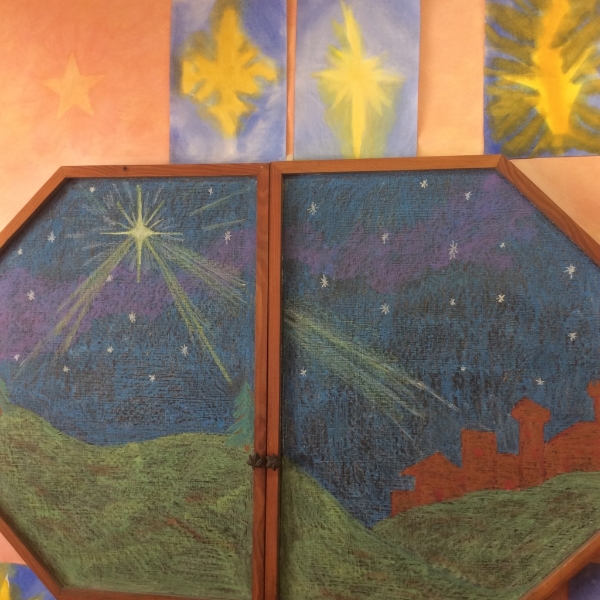Excitement over winning the Reading Champions trophy through the public library this summer!
Learning to read can be a real joy and is an important academic milestone in a young student's life. In Waldorf education, we help a child's capacity for reading develop naturally, and offer lots of opportunity to fall in love with words and story.
In an ideal world, young children enjoy exposure to the world of language and literature through their parents. Hopefully, books represent beauty, humor and love to a small child -- they soak in illustrations, they giggle at funny words or at the voices an adult uses to read, they cuddle with a loved one to hear a story -- or five. Reading becomes aspirational, as they see a parent enjoy reading, or that stack of books by an older sibling's bedside. Further, in a Waldorf kindergarten classroom, a reverence for language and for story is reinforced through a daily story told by the teacher, by a ready basket of beautiful books for quiet times, and through ample opportunity for imaginative play, play that lays the groundwork for eventual understanding of abstract concepts.
In grade school, reading instruction is a part of language arts as a whole. In 1st grade, Waldorf education introduces reading through stories. Children discover letter forms out of a story their teacher tells, listening and then drawing, molding and moving through letters and their sounds. In other words, we take a multi-sensory approach, engaging a child auditorially, visually, kinetically, and at heartfelt level.They revel in the unique sounds of a letter as they practice writing simple sentences from the stories they are hearing and the pictures they are drawing. They write letters, then sentences and eventually, longer stories, until one day, it may dawn on them that they are reading what they are writing. Do you remember this eureka moment in your own life?
This unfolding and discovery allows for the love of language and of story to grow. The children work at decoding through phonics and sight word recognition too, but the emphasis remains on comprehension. Stories are told throughout a Waldorf education, and the overall literacy of a student grows with each passing year -- including vocabulary, grammar skills, and cultural and historical knowledge. With such a robust and supple beginning to language arts, Waldorf education actively cultivates space for developing capacity, both in interest and skill. Reading comes from the inside out, and while the time to master the mechanics varies, the intrinsic motivation and engagement with language is indicative of the lifelong joy of choosing to read!
For more, ask your child's teacher, or:
Read this blog post by the Waldorf School of Philadelphia, full of links to recent research in reading instruction, originally posted September 21, 2016: Reading in Waldorf Schools
For a parent's perspective, read Myth Busting: How Reading is Taught in a Waldorf School by Sarah Baldwin, Moon Child blog, originally posted June 6, 2011.
And an excellent article describing more of the art and mystery inherent in the act of learning to read: There's More to Reading Than Meets the Eye by Barbara Sokolov, Renewal, A Journal for Waldorf Education, Vol. 9#1, Spring 2000
Sometimes, reading comes along unusually slowly for children because there are underlying issues such as dyslexia. When it becomes clear that extra help in mastering the fundamentals of reading are needed, we work with the parents to arrange for supplemental help. Sometimes this means that a child works with a tutor at school once, twice or more times per week. This extra help in 2nd, 3rd or 4th grade can make a big difference in a child's confidence and image of themselves as a successful reader.
































